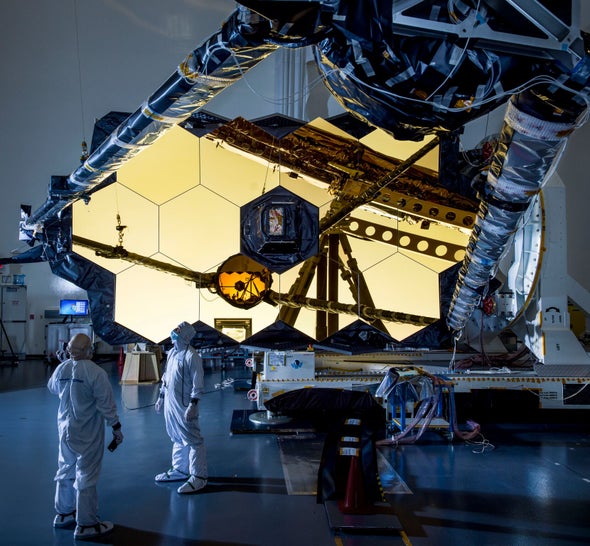The James Webb Telescope under construction. Credit: NASA/Chris Gunn Flickr (CC BY 2.0)
A better understanding of what gases to search for in exoplanet atmospheres is key to locating extraterrestrial life
Imagine for a moment that an alien astrophysicist on some distant but inhabited planet is trying to find out whether Earth is inhabited. If they were looking in the last 100 years, there would have been several unequivocal pieces of evidence: radio signals, television broadcasts, emissions of artificial chemicals such as chlorofluorocarbons, or CFCs.
But for the billions of years of life on Earth that preceded this, we were much less obvious. The alien astrophysicist could have detected oxygen in our atmosphere, which is intriguing but not a surefire sign of life. A combination of oxygen and methane would be much more promising, but both gases can be false positives, as they could be the result of geochemical or atmospheric processes.
Source: When We Finally Find Aliens, They Might Smell Terrible – Scientific American Blog Network













